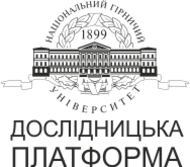№79-17
Mathematical model of viscous incompressible fluid motion between wheel and rail during braking and acceleration
A. Monia1
1 Ukrainian State University of Science and Technology, Dnipro, Ukraine
Coll.res.pap.nat.min.univ. 2024, 79:200–209
Full text (PDF)
https://doi.org/10.33271/crpnmu/79.200
ABSTRACT
Purpose. Development, solution and analysis of a mathematical model of the motion of a viscous incompressible fluid in the contact zone of a wheel and a rail to establish the characteristics of rolling a wheel on a rail in the presence of an intermediate medium during braking and acceleration.
The methods. To describe the motion of a viscous incompressible fluid, the Navier-Stokes equations in the polar coordinate system are used. The solution of the system of linear algebraic equations was performed using the Gauss method. To satisfy the velocity and pressure vector projection functions to the boundary conditions, the method of weighted residuals in the form of point-wise collocation was used. Numerical integration was used to determine the lifting force of the intermediate medium and the viscous drag force due to the presence of the intermediate medium as functions of relative sliding.
Findings. The influence of the intermediate medium on the characteristics of wheel-rail adhesion under negative and positive relative slips is substantiated by mathematical modeling of the process of rolling a steel wheel on a rail. It is shown that in order for the ratio of the increase in the relative lifting force of the intermediate medium to the increase in the relative force of viscous resistance compared to the values of these quantities during free rolling to not exceed unity, it is necessary to limit the absolute value of the relative slip to 8.5%.
The originality. For the first time, the influence of an intermediate medium with the properties of a viscous non-compressible fluid on the characteristics of the wheel-rail friction contact under negative and positive relative slips has been substantiated. The relationship between the increase in the relative lift force and the increase in the relative force of viscous resistance on the relative slip was found in comparison with the values of these quantities during free rolling.
Practical implementation. A scientifically based engineering method has been developed for determining the relative lifting force of the intermediate medium, the relative force of viscous resistance caused by the presence of the intermediate medium, and the ratio of the increase in the relative lifting force to the increase in the relative force of viscous resistance compared with the values of these quantities during free rolling as functions of relative slip for given initial data.
Keywords: frictional couple, coupling coefficient, a locomotive wheel, a railway line, Navier-Stokses equations, a method of the weighed discrepancies.
References
1. Taran, I. O., & Novytskyi, O. V. (2014). Halmivni prystroi shakhtnykh lokomotyviv: monohrafiia. Natsionalnyi hirnychyi universytet. https://core.ac.uk/download/pdf/48405061.pdf
2. Taran, I., Bondarenko, A., Novytskyi, O., Zhanbirov, Z., & Klymenko, I. (2020). Modeling of a braking process of a mine diesel locomotive in terms of different rail track conditions. E3S Web of Conferences, 201, 01018. https://doi.org/10.1051/e3sconf/202020101018
3. Samorodov, V., Bondarenko, A., Taran, I., & Klymenko, I. (2020). Power flows in a hydrostatic-mechanical transmission of a mining locomotive during the braking process. Transport Problems, 15(3), 17–28. https://doi.org/10.21307/tp2020030
4. Monia, A. (2023). Mathematical substantiation of mine locomotive braking efficiency under pulsiting braking torque. Zbirnyk naukovykh prats Natsionalnoho hirnychoho universytetu, 72, 153–160. https://doi.org/10.33271/crpnmu/72.153
5. Cavaterraa, C.,Grassellic,M., Mehmoodd, M,& Voso,R. (2024). Analysis of a Navier-Stokes phase-field crystal system. Nonlinear Analysis: Real World Applications, 83, 104263. https://doi.org/10.1016/j.nonrwa.2024.104263
6. Aourir, E., & Dastjerdi, H. (2024). Numerical computational technique for solving Volterra integro-differential equations of the third kind using meshless collocation method. Journal of Computational and Applied Mathematics, 457, 116294. https://doi.org/10.1016/j.cam.2024.116294




